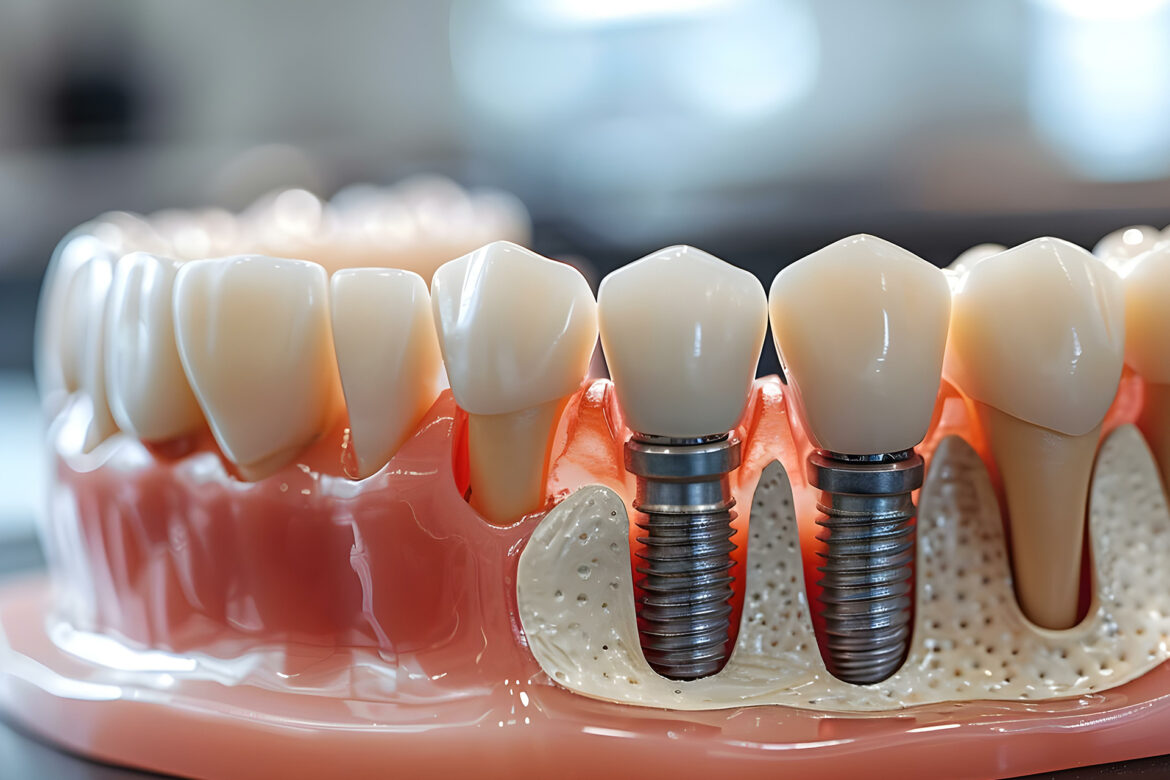Abstract
Peri-implantitis is a bacterial infection that causes soft tissue inflammatory lesions and alveolar bone resorption, ultimately resulting in implant failure. Dental implants for clinical use barely have antibacterial properties, and bacterial colonization and biofilm formation on the dental implants are major causes of peri-implantitis. Treatment strategies such as mechanical debridement and antibiotic therapy have been used to remove dental plaque. However, it is particularly important to prevent the occurrence of peri-implantitis rather than treatment. Therefore, the current research spot has focused on improving the antibacterial properties of dental implants, such as the construction of specific micro-nano surface texture, the introduction of diverse functional coatings, or the application of materials with intrinsic antibacterial properties. The aforementioned antibacterial surfaces can be incorporated with bioactive molecules, metallic nanoparticles, or other functional components to further enhance the osteogenic properties and accelerate the healing process. In this review, we summarize the recent developments in biomaterial science and the modification strategies applied to dental implants to inhibit biofilm formation and facilitate bone-implant integration. Furthermore, we summarized the obstacles existing in the process of laboratory research to reach the clinic products, and propose corresponding directions for future developments and research perspectives, so that to provide insights into the rational design and construction of dental implants with the aim to balance antibacterial efficacy, biological safety, and osteogenic property.
Background
Peri-implantitis is a polymicrobial infection that occurs at the implant site owing to bacterial contamination and poor oral hygiene. Dental plaque is one of the main risk factors for peri-implantitis, which causes inflammatory tissue lesions and alveolar bone loss around dental implants. The prevalence rates of peri-implant mucositis and peri-implantitis were about 80% and 28–56% of the subjects, and about 50% and 12–43% of the implants, respectively, after 5–10 years of implantation . Additionally, the occurrence rates of peri-implantitis are 0.16 per patient-year and 0.10 per implant-year, and approximately one-third of the patients and one-fifth of all implants are affected. Therefore, peri-implant disease is considered one of the greatest threats that seriously impair implant success. In the absence of effective interventions, the inflammatory process may gradually destroy the bone surrounding the implant, eventually leading to implant failure.
Generally, clinical treatment strategies for peri-implant infection can be categorized into nonsurgical and surgical access therapies. Nonsurgical methods for peri-implantitis mainly involve mechanical debridement (scaling and sandblasting) and adjunctive therapy (chlorhexidine) with the aim to remove dental plaque; surgical treatment of peri-implantitis commonly uses periodontal flap surgery and guided bone regeneration to restore the bone defect. Although the above methods have achieved positive therapeutic effects, mechanical debridement may cause damage to the surface properties of the dental implants, and the use of antibiotics may cause bacterial resistance. Besides, the elimination of biofilm only removed inflammatory stimuli in the surrounding microenvironment but did not completely improve the local inflammation in the jaw caused by bacterial infection. Therefore, the management of peri-implantitis aims at removing the bacterial biofilm and rendering the surface and microenvironment to achieve re-osseointegration.
At present, titanium (Ti) alloys and zirconia are commonly used as dental implant materials, corresponding products have been widely used in clinics.

